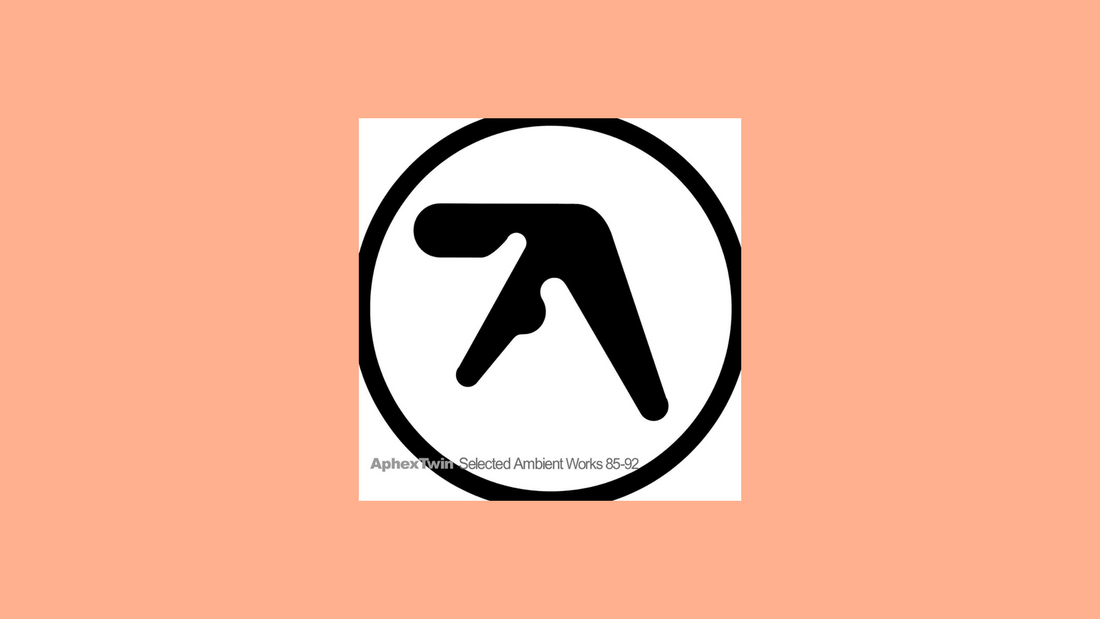
Aphex Twin – Selected Ambient Works 85–92 (1992)
By Rafi Mercer
The bassline is the first thing you feel. Not hear — feel. It thuds and glides with a warmth that fills the room, analogue and imperfect, human despite its machine origin. Above it, melodies bloom: simple, tender, half-remembered. Rhythms tick like broken clocks, just askew enough to feel alive. This is Selected Ambient Works 85–92, the debut album of Richard D. James, better known as Aphex Twin. Released in 1992, it remains one of the most influential electronic records ever made, a work that blurred the boundaries between dancefloor and dreamscape, between machine precision and human intimacy.
The title suggests a retrospective, a collected works. In truth, it is a sketchbook made public, a gathering of pieces James had been recording privately since his teenage years in Cornwall. The tracks were laid down on rudimentary equipment, often using homemade or modified gear. Yet their impact was seismic. At a moment when rave culture was exploding across the UK, Aphex Twin offered a vision of electronic music that was as introspective as it was physical, as tender as it was propulsive.
Take “Xtal,” the opening track. A drum machine ticks gently beneath a wash of synths and ghostly vocal samples, melodies circling with lullaby simplicity. It is dance music, but fragile, almost shy. The beat invites movement, but the atmosphere invites stillness. “Tha” stretches to over nine minutes, its rhythm unchanging while synth lines drift like clouds, hypnotic in their refusal to resolve. These are not club bangers. They are spaces to inhabit.
Elsewhere, “Pulsewidth” surges with energy, its bassline rough-edged, distorted, yet buoyant. “Ageispolis” is crystalline, a sequence of cascading arpeggios that feels both futuristic and childlike. “Heliosphan” blends urgency with melancholy, a track that aches even as it drives forward. The closing “Actium” swells into something darker, heavier, its layers colliding until the track dissolves into echo. Each piece offers a different angle, yet all share the same paradox: music made with machines that feels deeply, startlingly human.
What unites the album is its texture. The sound is warm, analogue, slightly degraded. These are not pristine digital productions. They hum, they hiss, they wobble. The imperfections make them breathe. In an era when electronic music was often dismissed as cold or mechanical, James proved that synthesisers could whisper, could sigh, could ache. His beats may be programmed, but they feel played. His melodies are simple, but they linger like memory.
The cultural impact was immense. Selected Ambient Works 85–92 offered a counterpoint to the relentless energy of rave and techno. It suggested that electronic music could be domestic, private, suited to headphones as much as to clubs. Critics struggled to categorise it: too fast to be ambient, too atmospheric to be house, too rough-hewn to be pop. Yet listeners embraced it. Over the years it has come to be regarded as one of the great electronic albums, often cited as a foundational text for ambient techno, IDM, and countless subgenres that followed.
But beyond influence, the album endures because of its sincerity. There is no sense of irony here, no attempt to dazzle with virtuosity. These are sketches, ideas, fragments — yet their honesty makes them powerful. You can imagine the young Richard D. James alone with his machines, coaxing sound into being, fascinated not with spectacle but with possibility. That intimacy carries through every track. Listening, you feel not just the music but the presence of the person behind it.
For those entering electronic music for the first time, Selected Ambient Works is welcoming. It does not demand insider knowledge or technical vocabulary. It is generous, immediate, melodic. You can dance to it, or you can dream to it. It speaks equally to those who lived through rave culture and to those discovering it decades later. It is as hospitable as it is adventurous — electronic sound not as gatekeeping, but as invitation.
On vinyl, the record takes on another layer of intimacy. The analogue warmth of the pressing deepens the basslines, while the inevitable crackle and hiss blend seamlessly with the already imperfect textures. The music feels less like a product and more like an artefact, a diary left open, a window into a private world.
Listening now, more than thirty years on, the album feels timeless. Electronic production has advanced dramatically since 1992, yet few records sound as fresh, as alive, as human. Its melodies still catch at the heart. Its beats still compel movement. Its textures still feel like the sound of someone exploring, curious, playful, unguarded. That is why Selected Ambient Works 85–92 remains essential: not because it invented a genre, but because it captured a spirit — of exploration, of intimacy, of listening slowly to what machines might reveal about us.
Rafi Mercer writes about the spaces where music matters. For more stories from Tracks & Tales, subscribe, or click here to read more.














